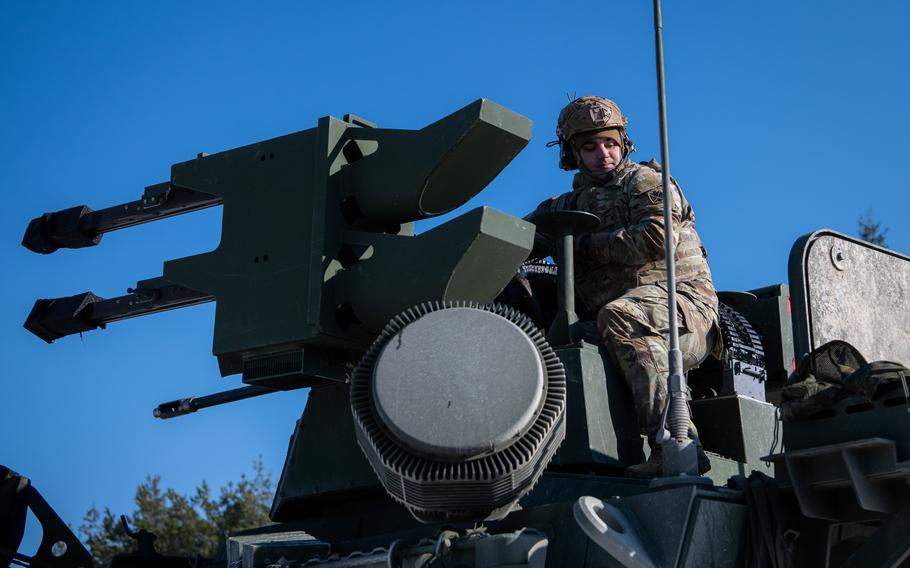
Staff Sgt. Cody Reichard trains on the maneuver short-range air defense, or M-SHORAD system, at Grafenwoehr Training Area, Germany, Feb. 9, 2023. (Phillip Walter Wellman/Stars and Stripes)
GRAFENWOEHR, Germany — Short-range missile defense was a prominent part of U.S. Army strategy in Europe for several decades, until it became an afterthought with the end of the Soviet Union and the rise of counterinsurgency warfare elsewhere.
But with Russia unleashing missile barrages on Ukrainian cities and neighboring U.S. allies concerned about projectiles flying over their borders, the soldiers of the 5th Battalion, 4th Air Defense Artillery Regiment training at Grafenwoehr, the Army’s largest training area in Europe, find their mission back in the spotlight.
In recent days, the Ansbach-based battalion has been practicing here to certify their gunnery skills on the maneuver short-range air defense system.
It is seeking to become the world’s first all-M-SHORAD unit with technology well beyond what Cold War soldiers used but perhaps familiar-looking to their grandkids. During the training, soldiers learned to use a device that looks like an Xbox controller.
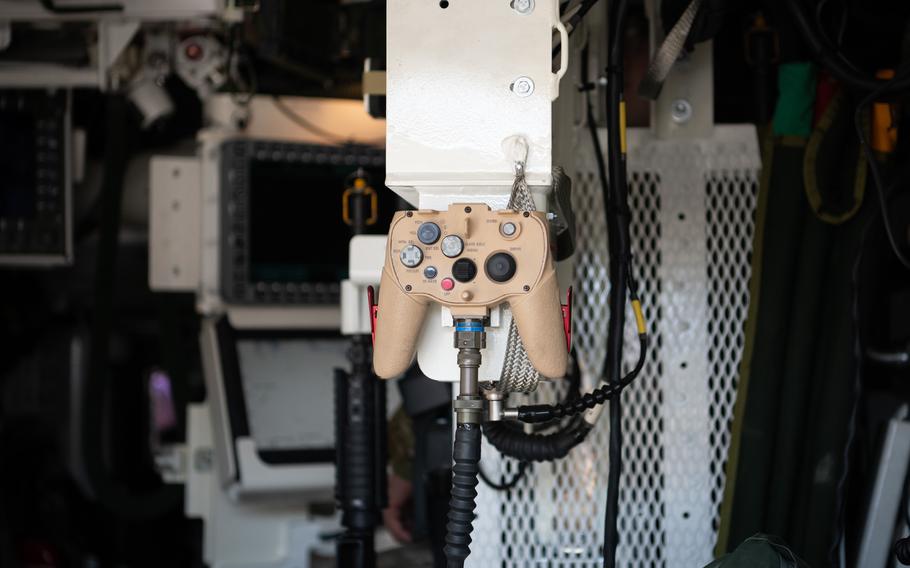
The M-SHORAD device used to track targets looks like an Xbox controller. (Phillip Walter Wellman/Stars and Stripes)
“I wouldn’t necessarily say it’s difficult, but there is a lot of information that we have to take in,” vehicle commander Sgt. Elijah Ryan said in describing the system, while 30mm cannons boomed over the snow-covered fields.
SHORAD is used to protect ground troops from cruise missiles, drones and other low-flying aircraft.
While air defense modernization became a priority in the years after Russia illegally annexed Ukraine’s Crimean Peninsula in 2014, officials say the Kremlin’s full-scale invasion of Ukraine last year has bluntly made the case for greater air defense capacity, especially in Europe.
“In the past, we took air superiority for granted,” Tom Karako, the director of the Missile Defense Project at the Center for Strategic and International Studies, said during a recent interview. “We have been rudely disabused of that idea now.”
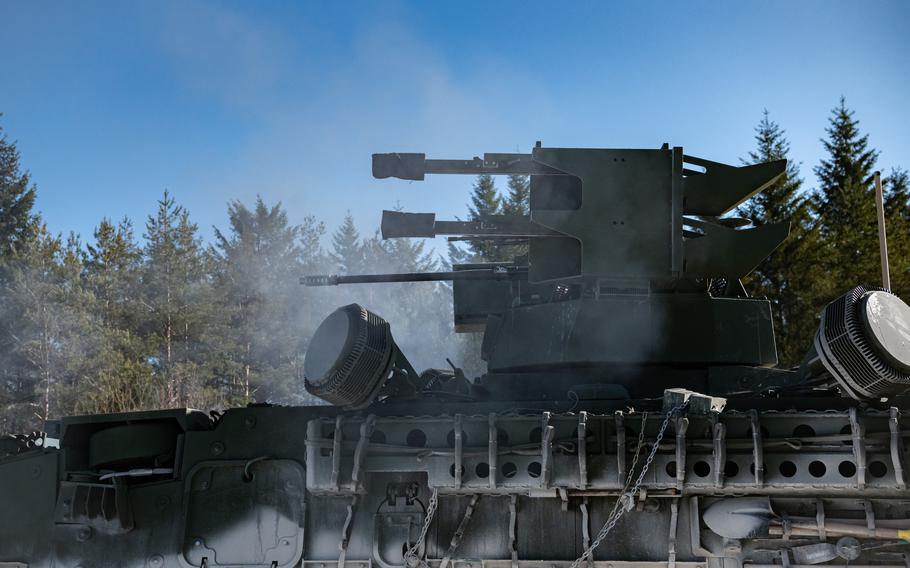
The maneuver short-range air defense, or M-SHORAD, fires at Grafenwoehr Training Area, Germany, Feb. 9, 2023. The system consists of a Stryker armored fighting vehicle equipped with a Stinger missile launcher, a 30mm cannon, M240 machine gun and a sophisticated radar system. (Phillip Walter Wellman/Stars and Stripes)
Karako was referring to the wide range of air and missile threats on display in Ukraine, adding that in the present climate, short-range air defense “is not something nice to have; it’s a must-have.”
The U.S. had little need for air defense during its wars in Afghanistan and Iraq because of its air superiority. As a result, the Army inactivated most of its SHORAD units and transferred their equipment to the National Guard.
Although SHORAD is generally viewed as equally important as medium- and long-range air defense, the Army has a larger short-range capacity gap that it needs to address. That’s where the soldiers training at Grafenwoehr come in.
The battalion is upgrading from the Avenger, a Humvee-based system that was developed in the 1980s. The more advanced M-SHORAD consists of a Stryker armored fighting vehicle equipped with a stinger missile launcher, an XM914 30 mm cannon, an M240 machine gun and a sophisticated radar system.
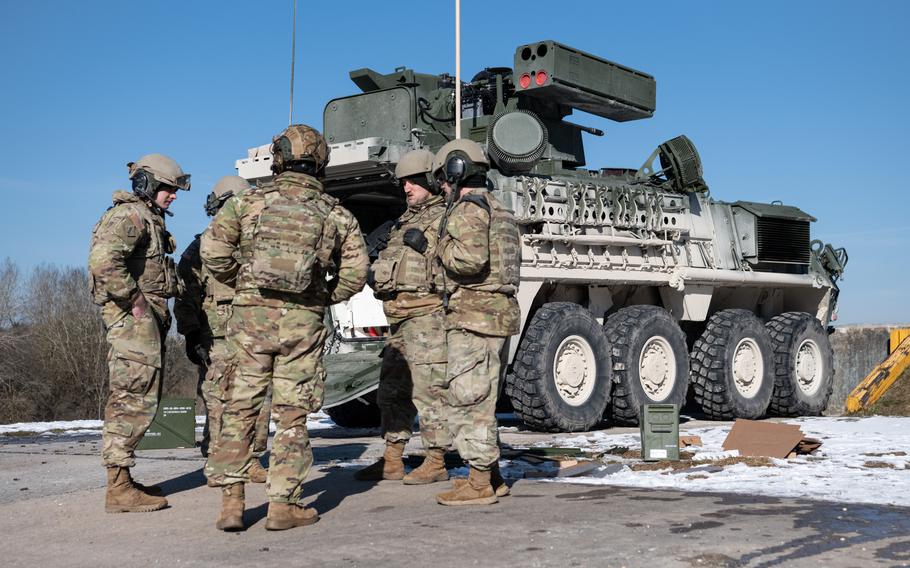
Soldiers with 5th Battalion, 4th Air Defense Artillery Regimen stand next to a maneuver short-range air defense, or M-SHORAD, system, at Grafenwoehr Training Area, Germany, Feb. 9, 2023. (Phillip Walter Wellman/Stars and Stripes)
It provides more protection for those inside the vehicle than the Avenger does, and the soldiers using it described it as more accurate, lethal and maneuverable.
As soldiers learn to operate the machine, they give feedback to manufacturers in the U.S. For example, Ryan said he wasn’t completely happy with how a switch works for tracking targets on those Xbox-like controllers.
In recent months, the U.S. provided four Avenger systems to Ukraine. U.S. soldiers trained over a dozen Ukrainian counterparts on the systems at Grafenwoehr, spokesman Maj. Robert Fellingham told Stars and Stripes.
The systems must be integrated with others to provide maximum protection. For the U.S., this means merging its capabilities with those of other NATO partners.
Since arriving in Europe, most troops with the 4th ADA regiment have been sent with Avengers to countries on NATO’s eastern flank.
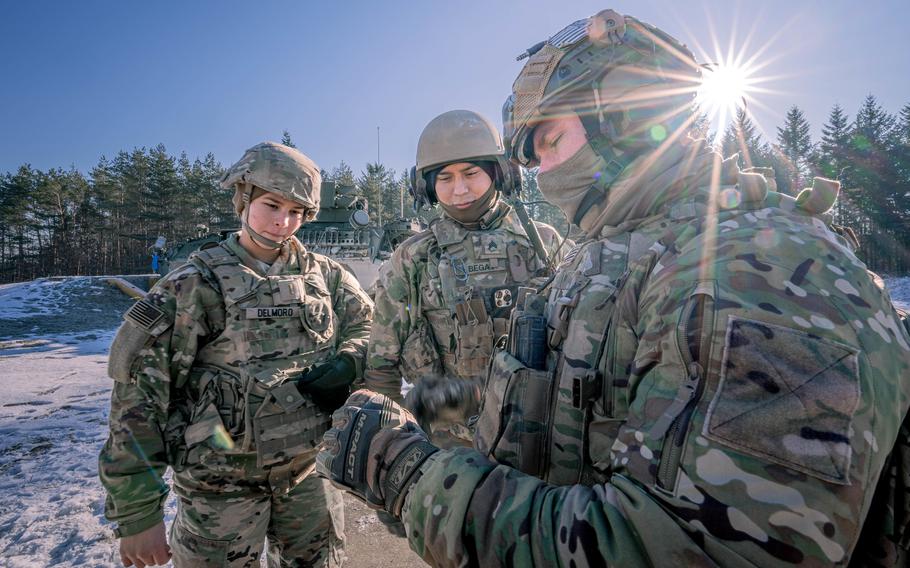
Second Lt. Marina Delmoro, left, Sgt. Lamar Begay and Staff Sgt. Robert O’Donnell train on the maneuver short-range air defense system at Grafenwoehr Training Area, Germany, Feb. 9, 2023. (Yesenia Cadavid/U.S. Army)
M-SHORAD platoon leader 2nd Lt. Marina Delmoro deployed to Germany just two weeks before she was sent last March to Lithuania, where people were wary of the Ukraine conflict spilling into their territory.
Delmoro is looking forward to the activation of an additional short-rage air defense battalion, likely to happen this fall, to help meet the growing SHORAD demand.
The 1st Battalion, 57th Air Defense Artillery Regiment also will be based in Ansbach. It will be an Avenger battalion for a few years before a planned change to the indirect fire protection capability, Army officials say. That system works with other air defense methods to defeat rockets and drones, among other threats.
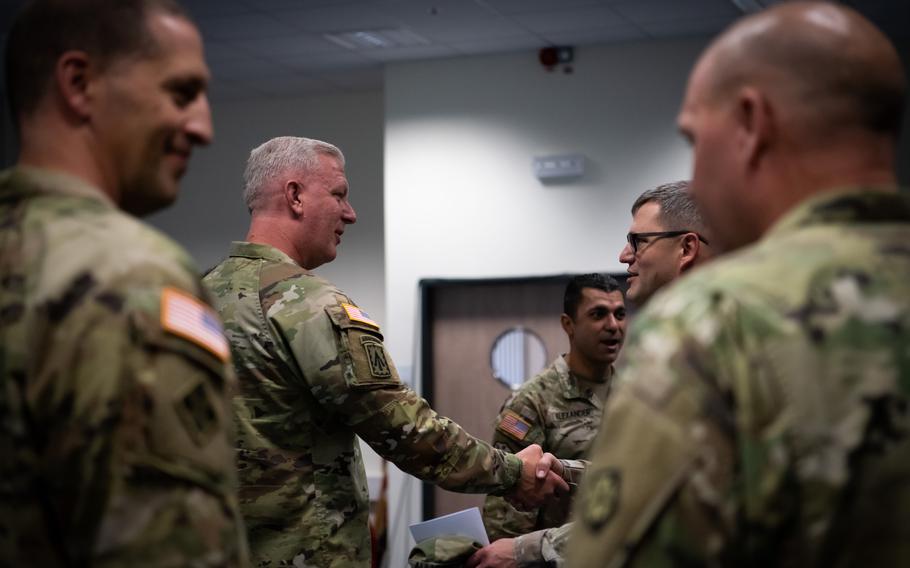
Army Col. Bruce A. Bredlow, center left, speaks with fellow soldiers at Sembach Kaserne after assuming command of the 52nd Air Defense Artillery Brigade on Oct. 6, 2022. (Phillip Walter Wellman/Stars and Stripes)
The two Ansbach battalions and a third in Baumholder that specializes in the long-range Patriot system fall under the 52nd Air Defense Artillery Brigade, which was activated last year in Sembach.
It’s expected to be about six months before the soldiers working with the M-SHORADs complete their training and all three dozen systems are in theater, brigade commander Col. Bruce Bredlow said.
“This newest capability is coming to Europe first,” Bredlow said. “This is a sign that we are very committed to Europe and the security of NATO.”
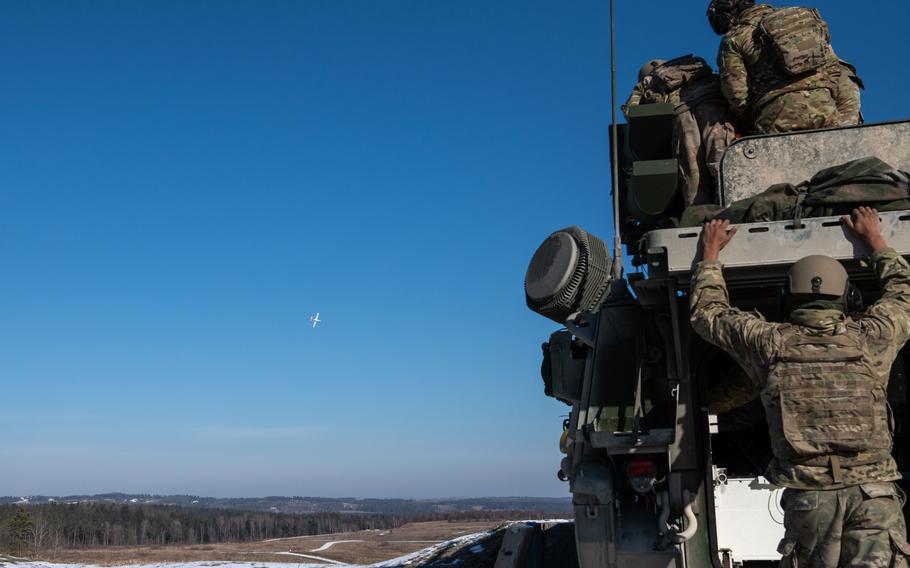
Soldiers with the 5th Battalion, 4th Air Defense Artillery Regiment train to counter short-range aerial threats with the M-SHORAD system at Grafenwoehr Training Area, Germany, Thursday, Feb. 9, 2023. (Phillip Walter Wellman/Stars and Stripes)